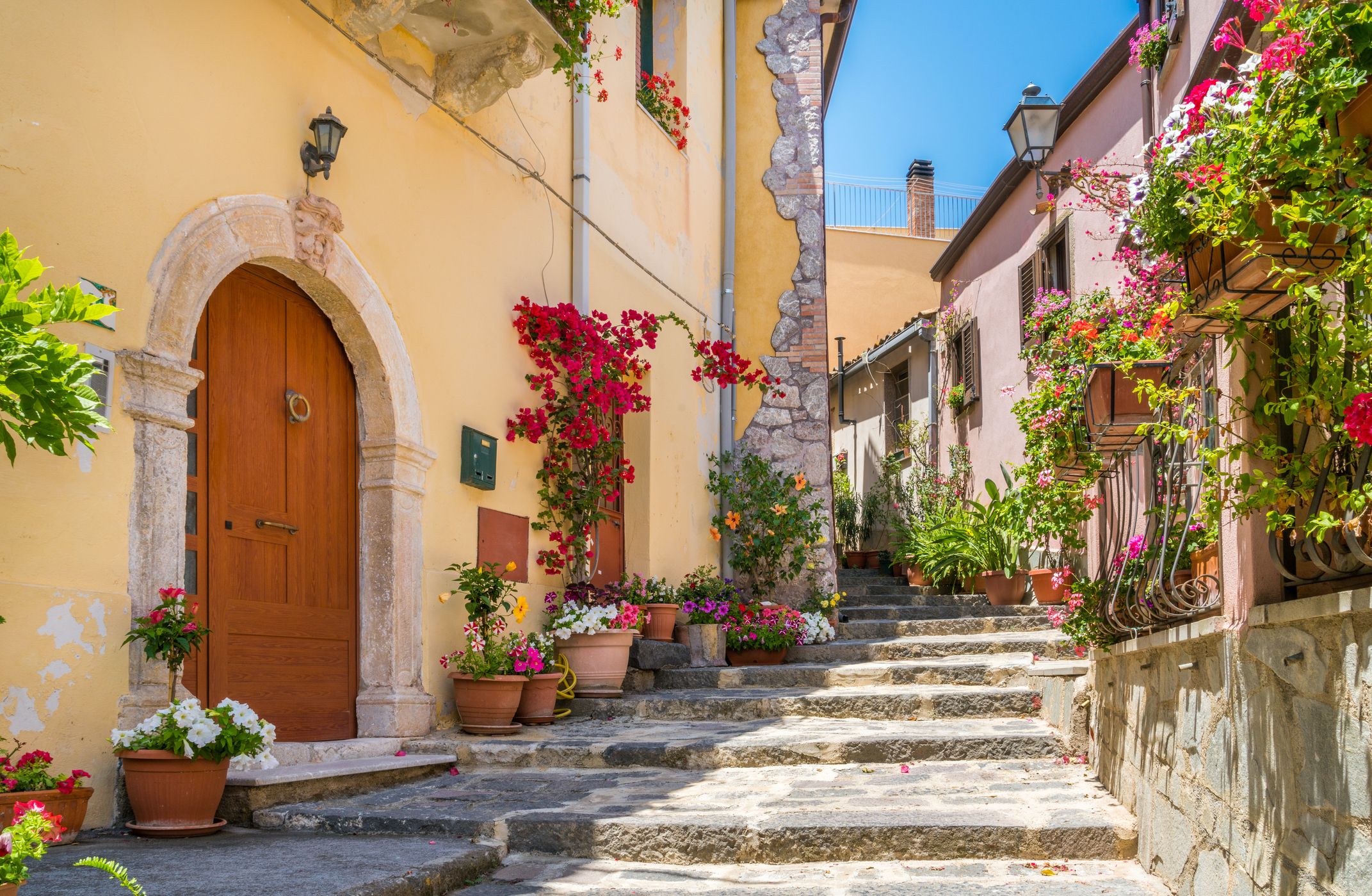
Italy’s early missteps in responding to the coronavirus can teach the world lessons on responding to pandemics.
What experts call the “Italian model to fight COVID-19” can be summarized in three steps: diminish viral contagions through quarantine; increase the capacity of medical facilities; and adopt social and financial recovery packages to address the pandemic-induced economic crisis.
Even if other nations initially viewed the Italian model with suspicion, it has since become a blueprint for many European nations and the United States. What has been less heralded has been Italy’s decentralized approach to fighting COVID-19. Yet the way that Italy has come to achieve cooperation across its different levels of government also offers lessons for other countries.
Italy’s intergovernmental cooperation came at a high cost. But the different measures implemented by municipalities in Italy, and the missteps taken by regional leaders, show how initial conflicts between central and regional governments can eventually be turned into enhanced cooperation. The Italian model of intergovernmental collaboration should be shared widely and followed by subnational governments on the forefront of the pandemic in other countries.
The first case of COVID-19 in Italy appeared in late January, when Chinese tourists from Wuhan were hospitalized in Rome after passing through Milan. The same day they were hospitalized, the Italian Minister of Health Roberto Speranza announced the suspension of flights to and from China, Hong Kong, Macau, and Taiwan to prevent the spread of the virus. Italy was the first European Union country to ban flights to and from China. In hindsight, this ban occurred too late, giving COVID-19 time to spread.
Before the first COVID-19 case appeared, an unusually high number of pneumonia cases emerged in Codogno, a small town in the Lombardy region. Soon afterwards, a researcher at the company Unilever was the first Italian patient with COVID-19. Authorities quickly confirmed the outbreak in Codogno—the “Wuhan of Italy” as it has been called—and social life came to a halt. Codogno’s mayor adopted several ordinances requesting citizens to stay home and wear masks when going out. A few days later, other small municipalities started to implement similar measures. Although Codogno had 35 new cases per day at the beginning of the outbreak, by the second week of March, the city registered no new infections.
On January 31, the Italian government declared a state of national emergency, which enabled various institutions to take extraordinary measures to respond to the pandemic, including the national Protezione Civile, the Ministry of Health, regional governments, and municipal governments. When the World Health Organization declared COVID-19 a global pandemic, the Italian Prime Minister, Giuseppe Conte, enacted various decrees—known as Dcpms—that are not subject to parliamentary control or signed by the President. In his effort to fight the spread of the virus, the Prime Minister has adopted Dcpms that limit fundamental rights enshrined in the Italian Constitution, such as personal liberty, freedom of movement, and freedom of assembly. Although constitutional rights are not absolute, only Parliament has the authority to limit them.
The Prime Minister also adopted decree laws pursuant to Article 77 of the Italian Constitution. Decree laws are temporary legislative measures signed by the President, Sergio Mattarella, that lose their effect unless they are transposed into law by Parliament within sixty days. Between February 23 and April 10, the Prime Minister adopted nine Dcpms and the President signed four decree laws to implement lock-down measures, showing the Italian government’s quick response to a pandemic that disproportionately affected Italy’s northern and central regions.
Although the Prime Minister’s Dcpms introduced meaningful measures, the President signed the most powerful set of policies with two decree laws, the “Cure Italy Decree” and the “Cash Decree,” which together offered a stimulus package of 425 billion euros to revamp the economy. These financial measures, adopted in consultation with the European Commission, help support families, workers, and enterprises. As soon as Parliament initiates proceedings to convert these presidential decrees into law, an extensive political debate will ensue over their scope and value.
After the COVID-19 outbreak in Codogno, several governors of Italy’s northern regions claimed that the virus was just a seasonal flu and did not take immediate quarantine measures. On February 25, Attilio Fontana, Governor of Lombardy and a member for the right wing populist party Lega, declared, “Let’s try to play it down: This is undoubtedly a difficult situation, but it is not dangerous.”
Indeed, at the beginning of the outbreak, both doctors and the central government supported the idea that COVID-19 was not as dangerous as it had been described, stating that everything was “under control.” Authorities not only underestimated the economic impact of the pandemic, but also delayed Rome’s response to COVID-19 until mid-March.
When the Italian government finally enacted its decrees to face COVID-19, it did so with little guidance for the regions. The best example of this lack of coordination was the decree the Prime Minister enacted on March 8, requiring the lockdown of the entire Lombardy region and some municipalities. Before the Prime Minister issued the decree, one of Italy’s most prestigious newspapers published its draft text. As a result, thousands of people left Milan to avoid being stuck in the so-called “red zone” where the lockdown would have been enforced the next day. All who left the “red zone” before the decree was enacted contributed to spreading the virus to the rest of the country—especially to its southern regions. To avoid further contagion, some regional governors asked their citizens to not return to the south, threatening them with mandatory self-quarantine. Better coordination between national measures and their regional implementation would have reduced the spread of COVID-19.
The Italian Constitution, which divides power between Italy’s central and regional governments, lists public health among the shared competencies between the state and the regions. Although this provision was not invoked, the central government can trigger a “substitution clause,” allowing it to take over regional powers in case of emergency.
By the end of February 2020, the Italian central government enacted provisions to fight the virus in limited parts of Italy—namely Lombardy and other small municipalities. With the increasing spread of COVID-19, however, regional governors and city mayors began taking their own lock-down measures to address the pandemic. Two main examples come from regions that the central government had not declared “red zones.” On February 22, the governor of the Friuli Venezia Giulia region and a member of the Lega party, requested the central government close the region’s territorial borders. Without consulting the central government, the governor adopted new draconian procedures to simplify the purchase of goods, services, and supplies to support the region’s residents.
Similarly, on February 26, Luca Ceriscioli, the governor of the Marche region in southern Italy and a member of the center-left party in the majority coalition, opposed the Italian government’s decision to declare the state of emergency only in the northern regions. He autonomously decided to close schools and suspend all public activities in the entire region. The region acted without approval from the central government. The Italian government responded by appealing the governor’s decision to the Regional Administrative Court, which suspended the governor’s order. This underscores the need for coordination between the national and regional governments.
In subsequent cases, the Protezione Civile worked as negotiator between regions and the central government, coordinating public health efforts by creating new hospitals and providing medical equipment. Although most regional governors, especially in the north, did not initially take the situation as seriously as they should have, they strictly implemented the national measures once the pandemic spread.
On February 21, the Governor of Lombardy created an emergency task force, in collaboration with the Ministry of Health and Protezione Civile, to manage the emergency intensive care units (ICU). Before the outbreak, the total ICU capacity in Lombardy was approximately 720 beds. The COVID-19 task force was responsible for responding to the demand for increased ICU capacity and for implementing containment measures.
The task force identified the most important public hospitals in the territory and asked them to implement targeted health measures. The regional governments participating in the task force allocated extra emergency funding, more health care workers, and equipment to ensure that patients who needed an ICU bed had one. One month later, the Italian government formed a new task force of 300 experts to help Lombardy cope with the health crisis. Following these efforts, the total ICU capacity in Lombardy rose to about 1600 beds in late March.
Another example of collaboration comes from Veneto, the second most-affected region after Lombardy. When cases of COVID-19 appeared in Veneto, Governor Luca Zaia was one of the first politicians to ask for more restrictive measures to face the pandemic. Local businesses protested the negative impacts of the restrictive measures on the local economy, however, and the governor changed his position.
Zaia then described the virus outbreak as a “media pandemic” or “international psychosis” and claimed the press had amplified the seriousness of the situation. But when the contagion spread, Zaia immediately established strict measures to isolate the positive cases in small municipalities, such as Vò, where most citizens were offered coronavirus testing. Despite his shifting stance, Governor Zaia quickly aligned his policies with directives coming from Rome and requested emergency powers to adopt more stringent measures than his neighbors.
Italy’s coordination between its central, regional, and municipal governments provides an example for the rest of the world. To avoid Italy’s missteps and learn from its successes, local governments around the world should seek ways to cooperate in common purpose to share the most effective measures to respond to the pandemic.
This essay is part of an ongoing series, entitled Comparing Nations’ Responses to COVID-19.




